How to Become a Model: A Beginner’s Guide
How to Become a Model?
To become a model, you will need to research the type of modeling you’d like to do, understand the strengths and beauty of your own body, practice posing in front of the camera, take photos to put together a model portfolio, and send applications and go to casting calls.
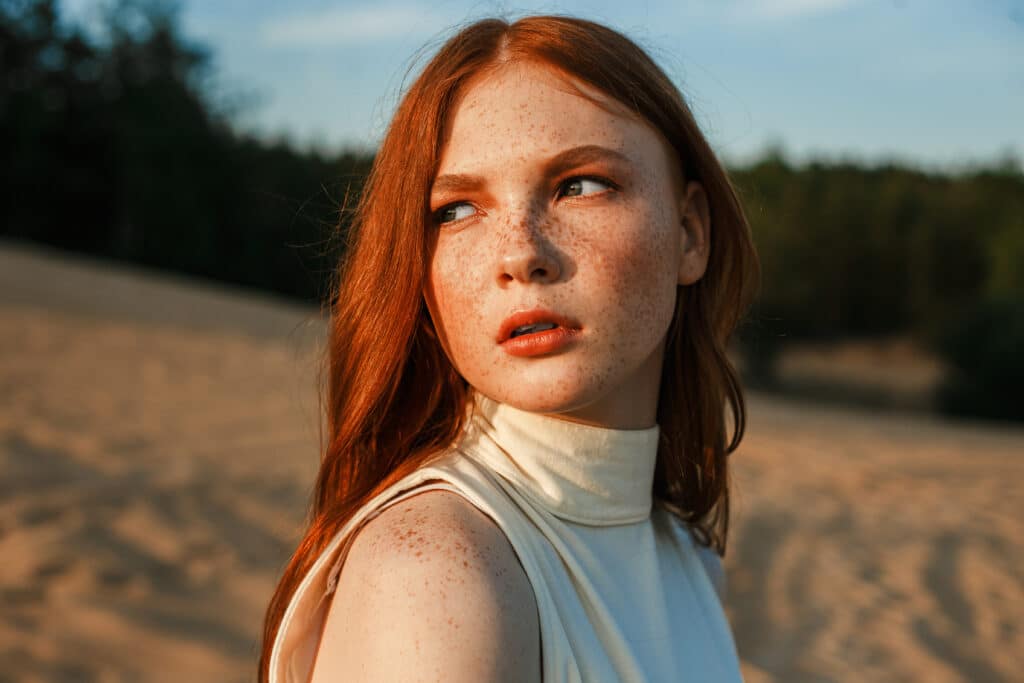
You’re not just a pretty face: to become a model, you’ll need stamina, business sense, and dedication. This comprehensive guide outlines the steps to becoming a model, including how to build an online portfolio.
Deciding This is the Career for You
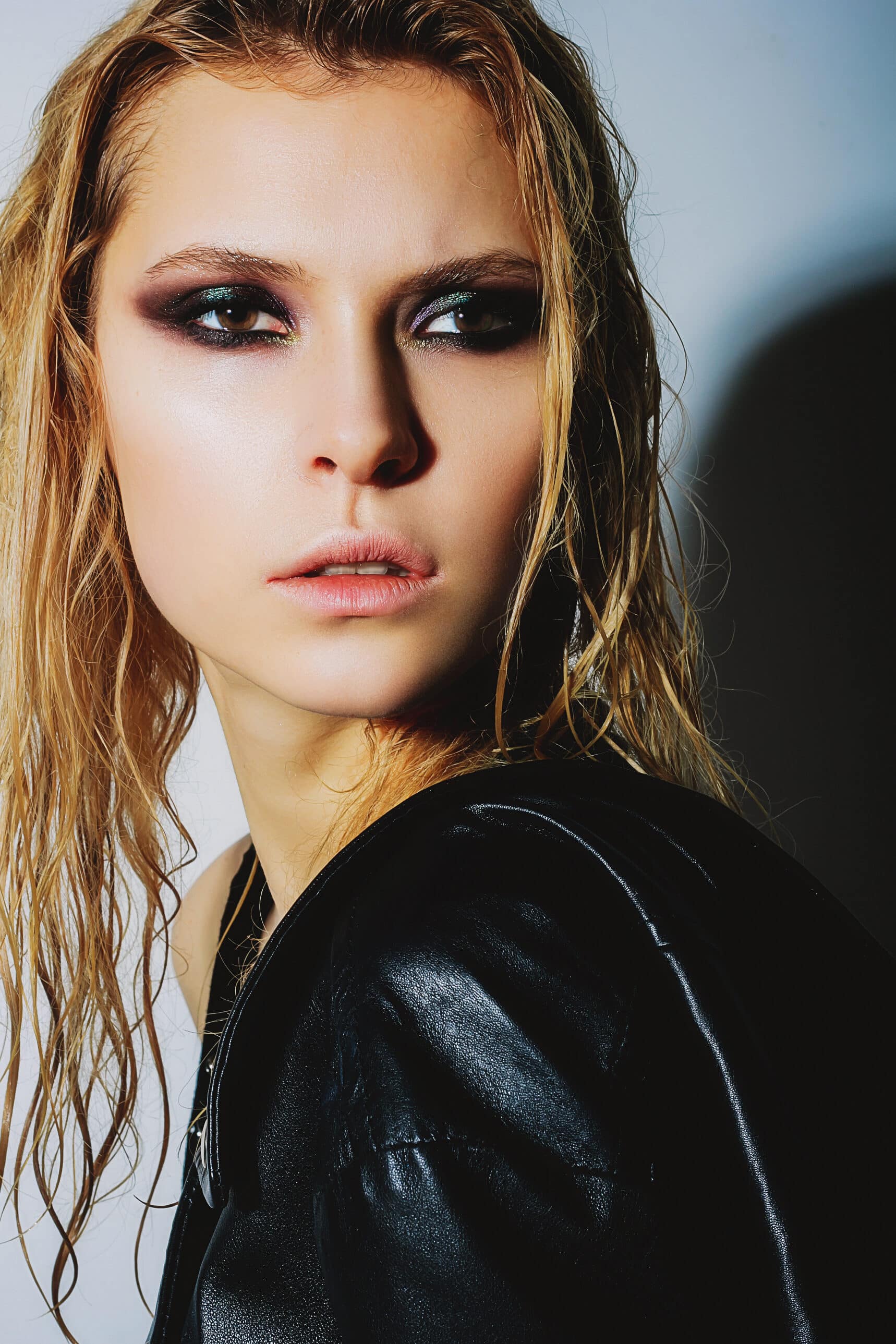

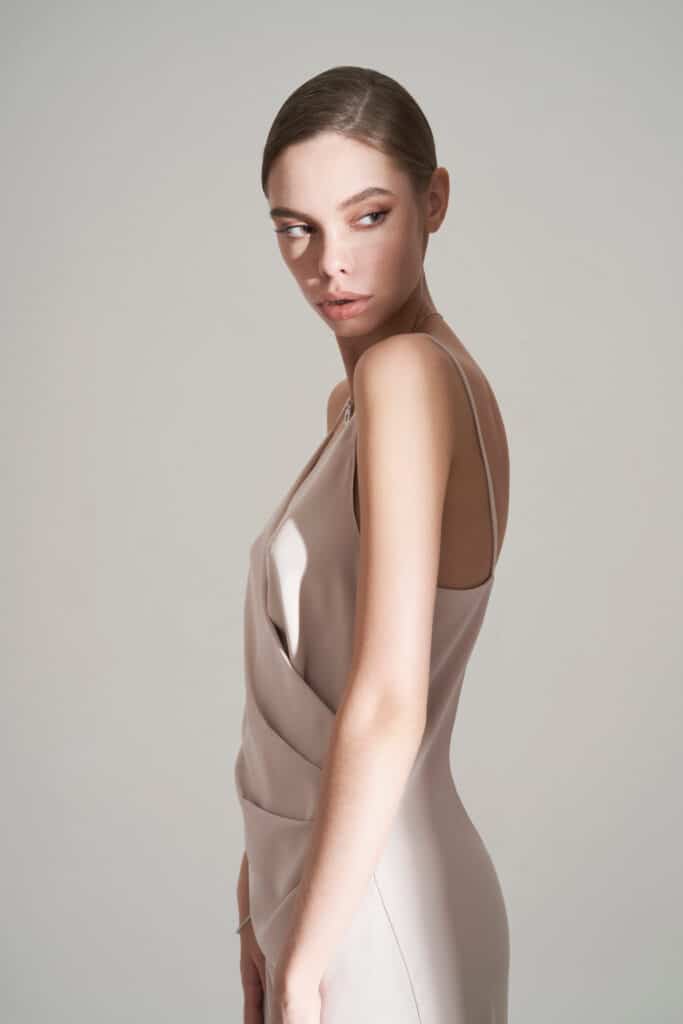
Do the glossy pages of Vogue inspire you to pose? Do you stomp every sidewalk like it’s a Milan catwalk? Do you have “the look”? You may just want to be a model.
The world of modeling has an avenue for everyone. There are so many niches and specializations that you can find at least one that fits your look and personality. Once you decide becoming a model is the right move, it’s time to choose which path you’ll take to get there.
It takes time, dedication, and probably most importantly, thick skin. For many, being judged based on your appearance can be taxing, but with the modeling industry becoming more body-inclusive, more opportunities are opening up for aspiring models of all shapes, sizes, genders, and sexual orientations.
If you’ve always dreamed of being a model, use this guide to help get your career started off on the right foot.
Expectation vs. Reality
Often glamorized in the media, the realities of modeling, being judged on your outward appearance, requires thick skin and an ability to handle criticism. No matter how accepting and body-positive your agency might be, as a model, you will always be using your body and your likeness in some form, whether it be to display clothing, walk down a runway, or sell skincare, and that makes you subject of critique.
If you can’t handle criticism or you’re not confident with your figure, it might be best to choose another path. This is not a profession where your interior self is the determining factor for success. We don’t love it, but it is the world of looks-first. Before deciding to become a model, be sure that it is something you think you can handle emotionally and mentally.
Modeling requires focus and stamina
Modeling can be physically demanding. Long days on your feet, repeating poses over and over again, and an ability to look at ease even when you’re exhausted and frustrated are just some of the more draining demands for a model.
Even getting your hair and makeup done can become mundane. Depending on the kind of modeling or the location of the job it may also be physically demanding to be posing in a challenging environment. In short: modeling requires some serious endurance to get through the long days.
Modeling requires an ability to follow direction
While modeling can ask for some level of creativity from you–think poses, expressions, movement; for the most part, you will be following the concept and direction of someone else. Whether it be a photographer, a runway director, or an artist; you’ve been hired to “model” something, which means taking directions to achieve the final vision. As a model, you not only need to be okay with this, but you also need to follow directions with ease. Complaining, and being difficult to work with won’t get you very far as an aspiring model. That said, if the directions are unreasonable or make you uncomfortable, as a professional draw your boundaries and assert yourself.
Modeling requires a personal grooming regimen
The industry has made great strides to becoming more accepting and inclusive, but at the end of the day, as a model, taking care of your appearance is important, especially if you’ve been hired for your particular look or your figure. A personal care regime might include skincare, exercise, hair care, and even things as simple as nail care.
Let’s Get Physical
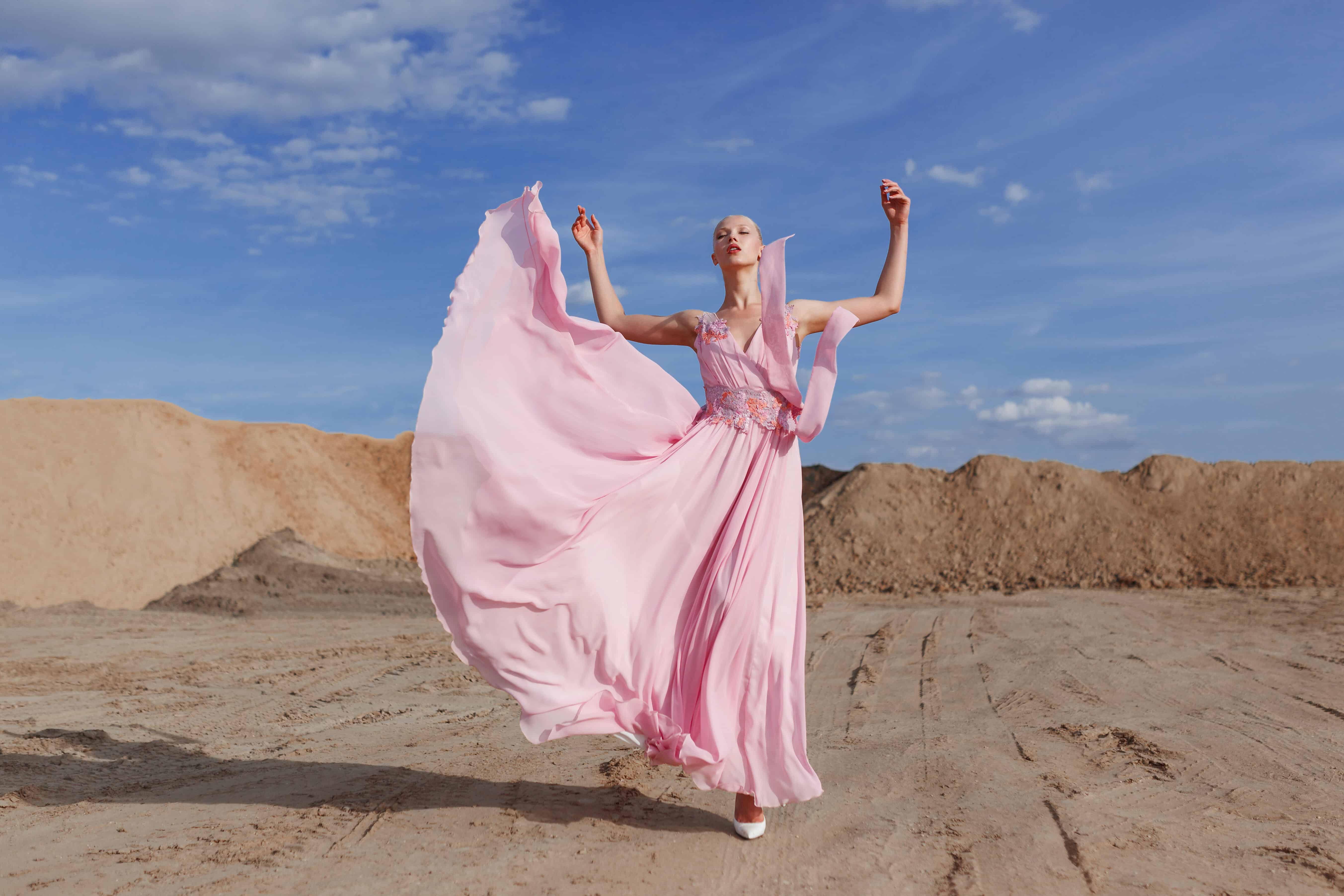
The first thing every aspiring model needs to know is what their best features are and how to emphasize them. Examine your face, free of makeup and with your hair pulled back. Gone are the days when the industry demanded strict symmetry and Eurocentric features. The concept around beauty and the process of finding the perfect model has changed significantly in the industry. Instead think about what is interesting about your face? Do you have full lips? Sleepy eyes? A gap in your teeth? Any of these can be advantageous when it comes to being remembered by casting agents.
Make faces in the mirror. Practice over-the-top emoting, laughing on cue, and bending your body into interesting positions while still looking natural and comfortable. Get comfortable in heels or other shoes you don’t normally wear. You may be asked to run, jump, and even skip in heels. Be fluid, with small movements between shutter clicks instead of completely different poses from snap to snap. Micro-expressions make all the difference, move in each session as if you are trying to create a stop-motion flip book.

Next, practice posing your whole body in front of a camera and mirror. If your aim is runway work, your ability to pose or strut down a line is what differentiates you from a stills model. Try setting up a simple studio in your home—all you need is a tripod and a camera or phone, set the self-timer on, and you can start to document your poses. Invite a friend to help you with photos, you can even try different locations, like a park, or a library. When reviewing the images, look for what you think works, and what you can improve.
Acting, yoga and dance classes can connect you with different sides of yourself. As you learn different ways to emote and move your body, you’ll be able to incorporate that knowledge into your work.
Remember: modeling is acting in stills and can be incredibly hard to sell. But when you do it right, the photographs are incredibly compelling and sell both the product and your abilities as a model.
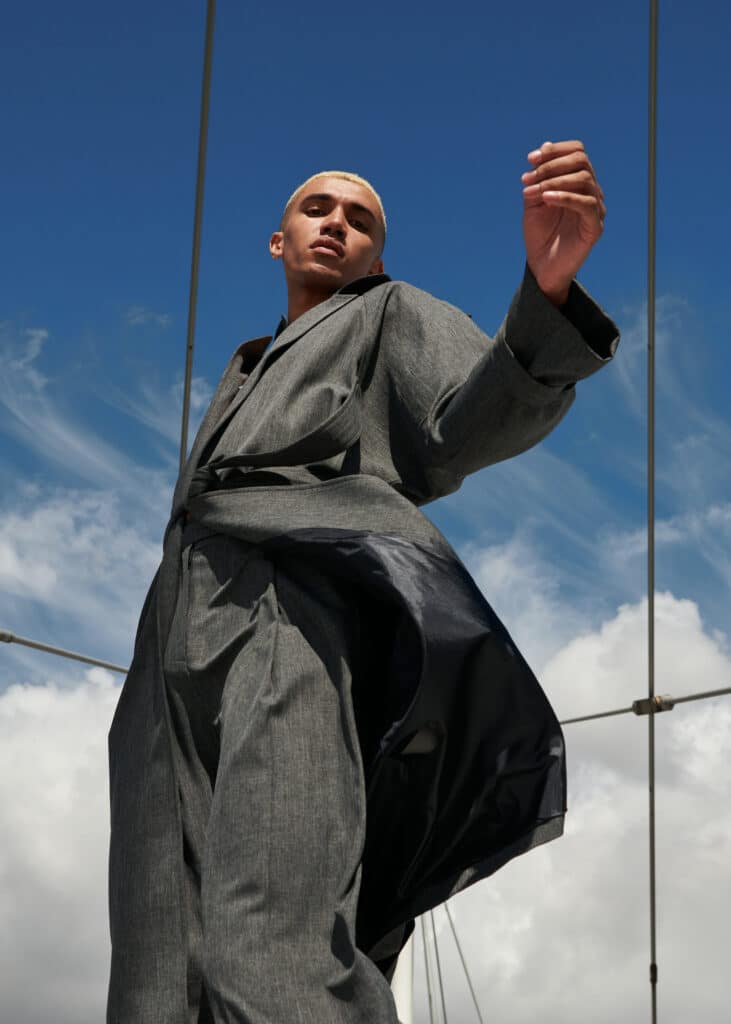
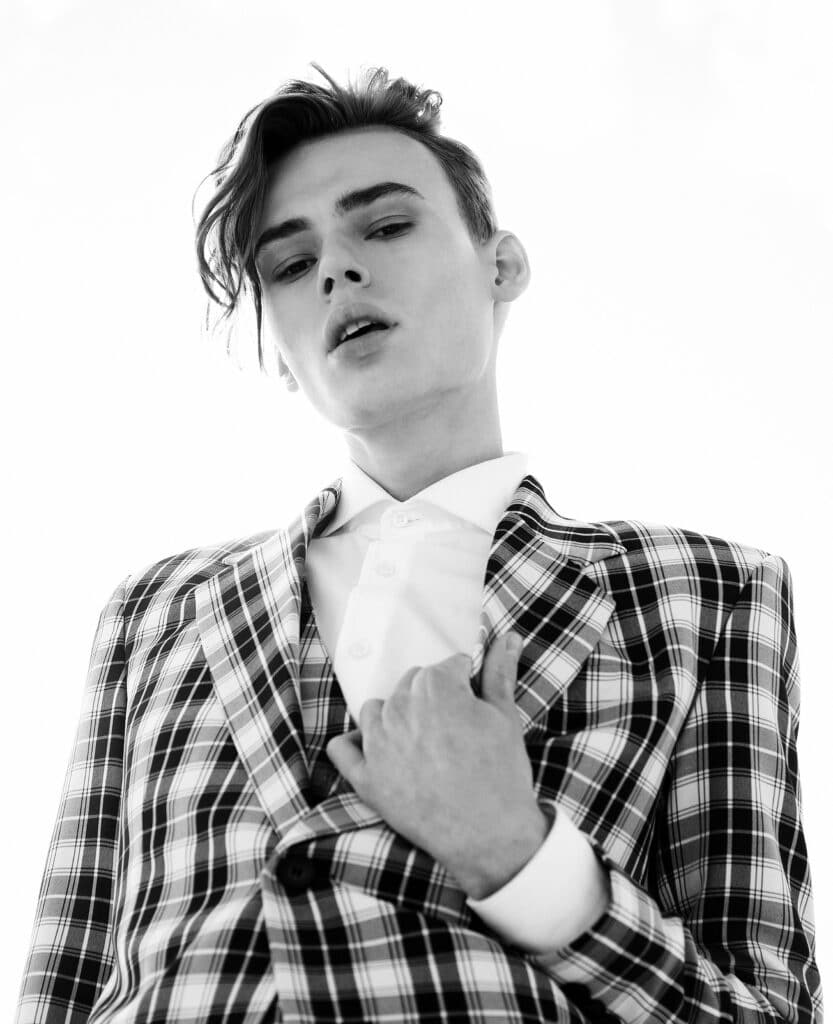

Build Your Modeling Portfolio
Once you know your angles and your poses, you’ll need more than a few selfies and party pics snapped on your iPhone to build your portfolio. Time to hire a photographer, or, as we will cover below, trade with other creatives.
No matter the arrangement, remember to communicate and understand the process and how they will shoot. This can be a great learning experience, because you’re the boss on this one. There are two types of portfolios you’ll need to curate. The first is a traditional, hard copy portfolio. This is your resume and you’ll bring this with you to all in-person casting calls. It should feature your best 8 to 12 images, and be presented in a portfolio case with a list of your modeling experience.
The second is your online portfolio where you can really show the breadth of your experience and versatility. Building a strong portfolio can be a time-consuming process, but shows casting agents what you bring to the table. It should be ever-evolving as you gain more experience, so update it regularly.
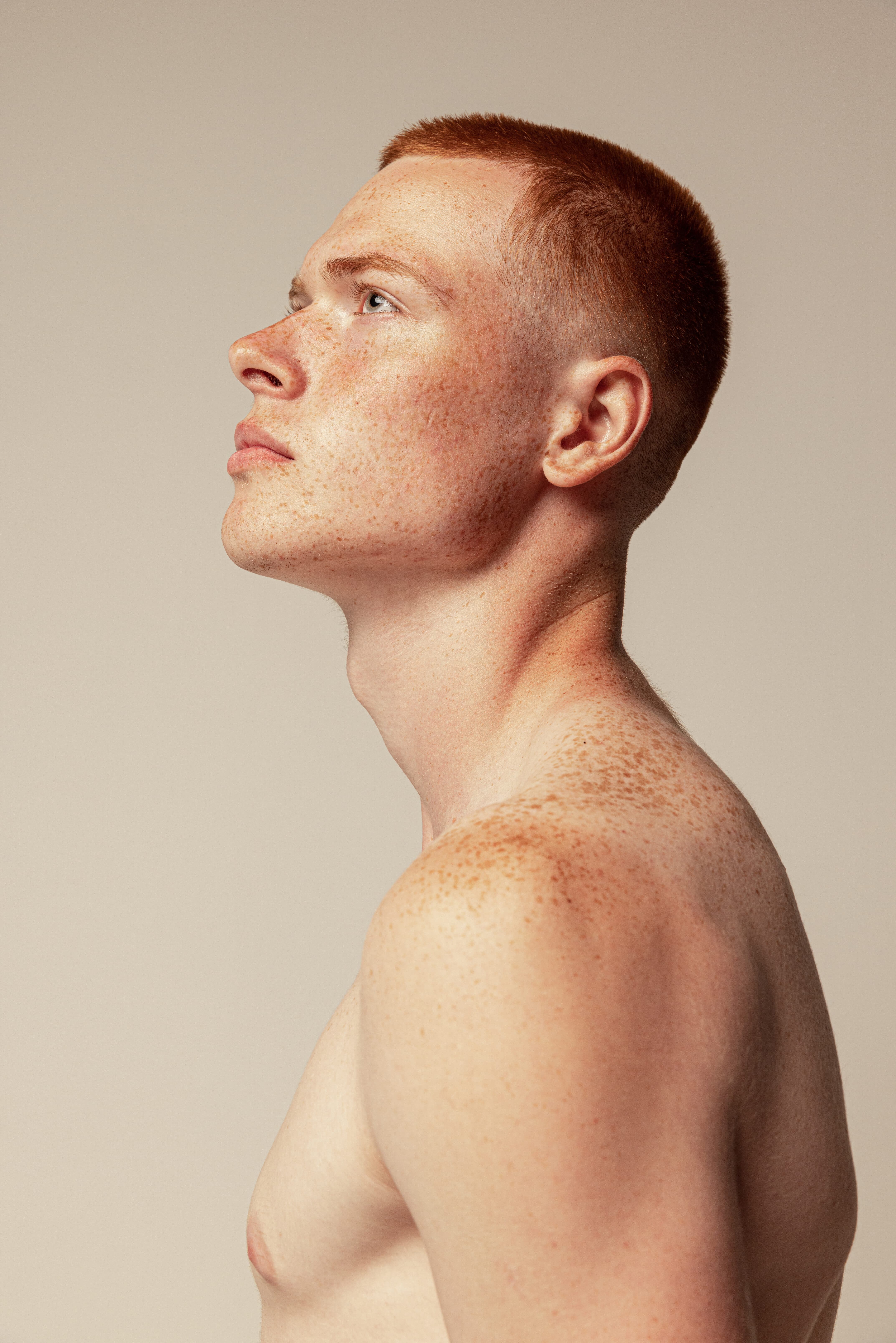
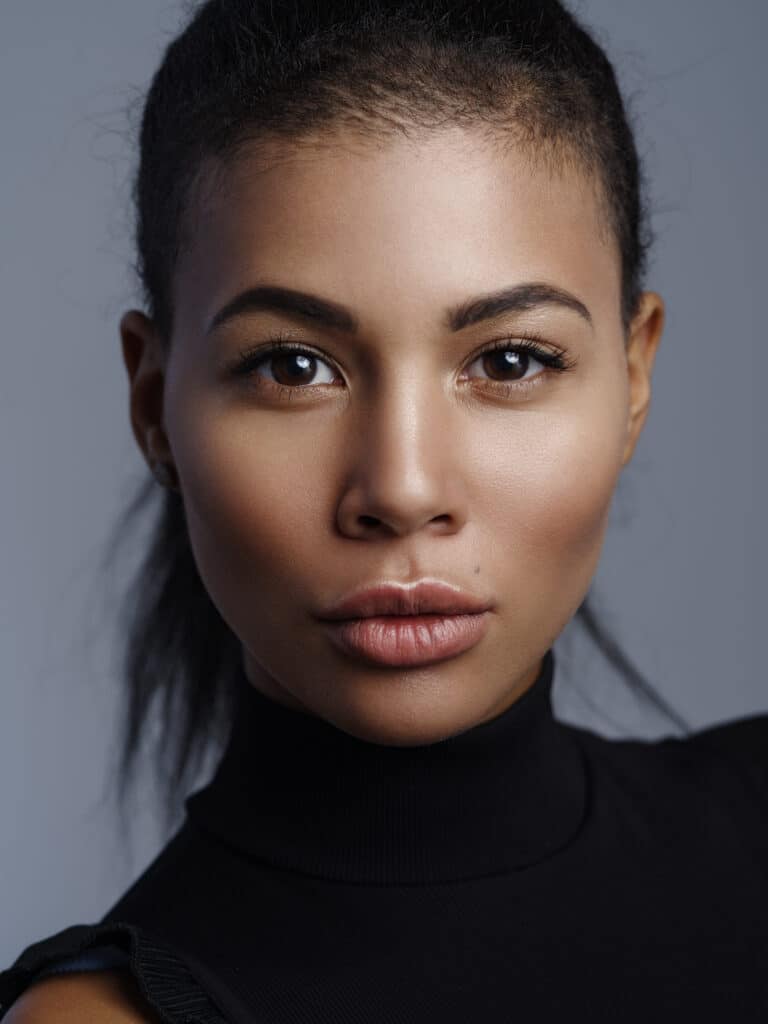
Get It Together
Start your modeling portfolio with a captivating headshot. However, this may not be an easy process, as it can be difficult to find the perfect one. Headshots can be just head and shoulders or from the waist up. Your headshot should show you in your “natural” state. Simple makeup, minimal jewelry, and minimally styled hair. If you have facial hair, it should be well groomed. Smiling or serious, your headshot should put your best face forward and be the first image in your portfolio.
Next, you’ll need a full body shot. Make sure your posture and form are proper so that it can accurately display your body. These are usually very simple, wardrobe-wise; you’ll need a fitted white shirt or tank top and a pair of dark wash skinny jeans or a tailored trouser. Long skirts or jackets or too many layers just cover up what the casting agents are looking for. Keep it simple and classic—you can get creative in other photos.
Consider including a swimwear or underwear shot. In the fashion modeling world, this is a uniform of sorts. Keep the photo fierce or playful, especially if you want to explore commercial modeling. Of course if you want to specialize in portraits for makeup and skincare only, you don’t have to add this to your portfolio.
To show your versatility include some editorial work in your portfolio. Find a theme, create a look, and collaborate with a team–some photographers and stylists work for trade to add to their own portfolios.
Lastly, you’ll want to include any tearsheets–these are torn out of a publication where you’ve been featured. For your digital portfolio, linking to the publication will suffice. If you are going to include tearsheets in your physical portfolio, be sure that they have cleanly cut edges and are in protective plastic sheets. It will leave a bad impression if your pages look tattered.
These are your portfolio must-haves. You can fill it out by adding other shots from these categories. Make sure there is at least one of you smiling, and end on a compelling headshot.
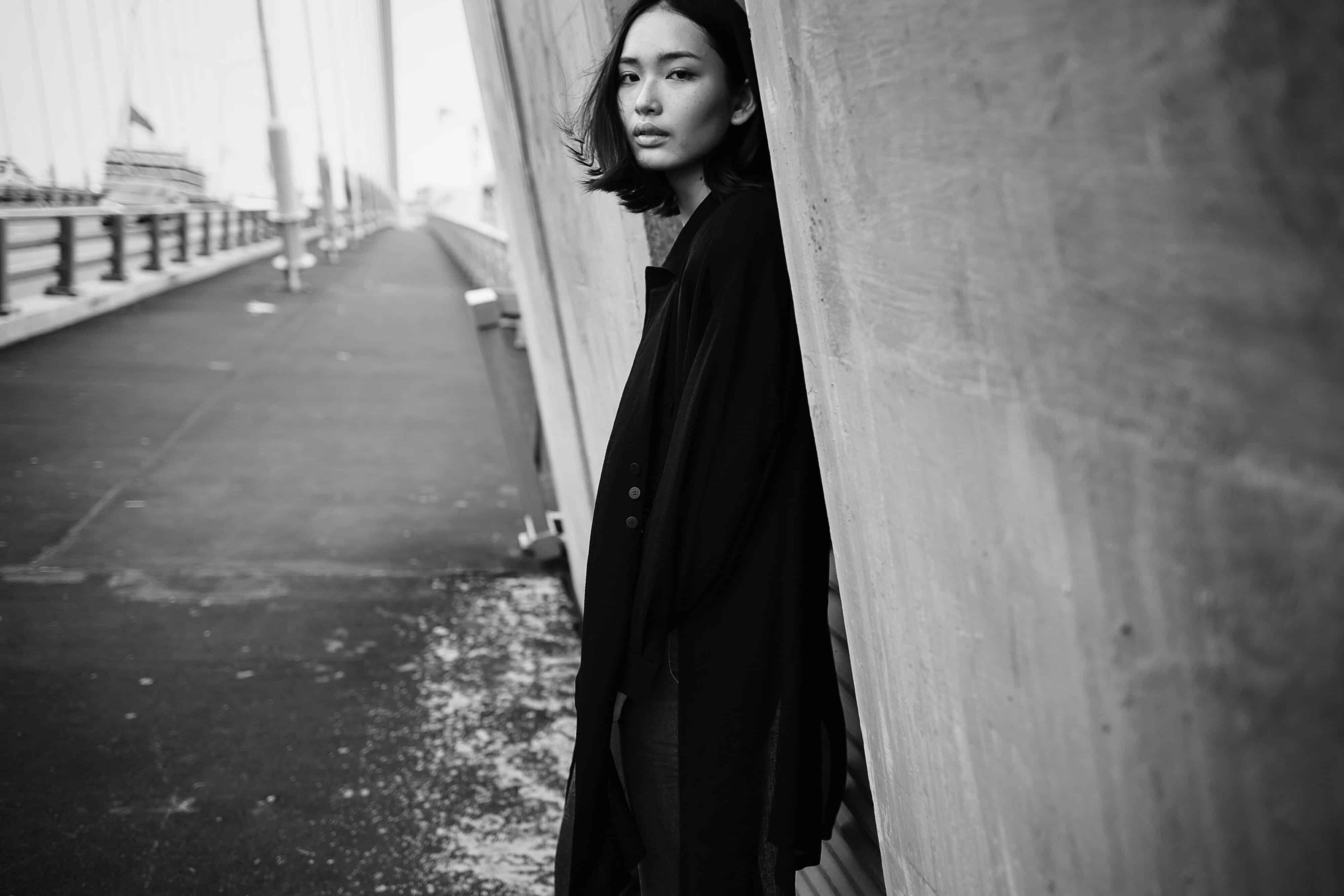
Go Out and Play
Photographers are expensive and worth every penny, but not everyone has that kind of financial freedom. Look for photographers who are just getting started and arrange some TFP (Trade for Print) sessions. The same goes for stylists, hair and makeup artists, and designers. Most—if not all—creatives need portfolios, and therefore often need models. This is also a great opportunity to try things out of your comfort zone and grow as a model, as well as a way to.
If fitness modeling is your goal, work with a trainer and work for marketing trade; be their walking, talking before and after.
It is very important to stress safety when working for trade with people you’re connecting with online. Follow common safety guidance: get their information, meet in public, have a friend with you, have your location turned on your phone, and make sure others know where you are and what you’re doing and when you should be checking in with them, and what they should do if you miss your check-in.

Get Signed
If you want to be a model, look for an agent. They can help you refine your book, set up go-sees, and help direct your career.
Agencies are now casting a much wider net to find talent via social media. Inviting Instagram users to add a hashtag to their posts allows recruiters to view thousands of potential models without ever leaving their office.
You can also skip the middleman and approach agencies directly. Research and seek out ones that align with your desired career path, then simply email them your website and a quick, attention-grabbing cover letter.
A word of warning: if an agency is demanding hundreds or thousands of dollars up front, keep looking; there are a lot of scammers in the periphery of modeling.
Ready to build a modeling portfolio? Create a killer modeling portfolio and make a great first impression on agencies and clients.

Go & See
Casting calls, or go-sees, are interviews for models either open to the public or arranged by agencies. You’ll need to bring your call/comp card; a quick list of your clothing size, shoe size, measurements, and contact information listed and stand (or walk, if it’s a runway job) for the casting agents. Go-sees are usually hectic and they rarely run on time. Bring a book to pass the time and notebook for taking down important information. The key: be punctual and professional. These are job interviews.
What Are The Different Types Of Models?
Figuring out which type of modeling is best suited for you and your personality can put you on the right track to connect with agencies, brands and photographers.
Here’s a comprehensive list of the different types of models:
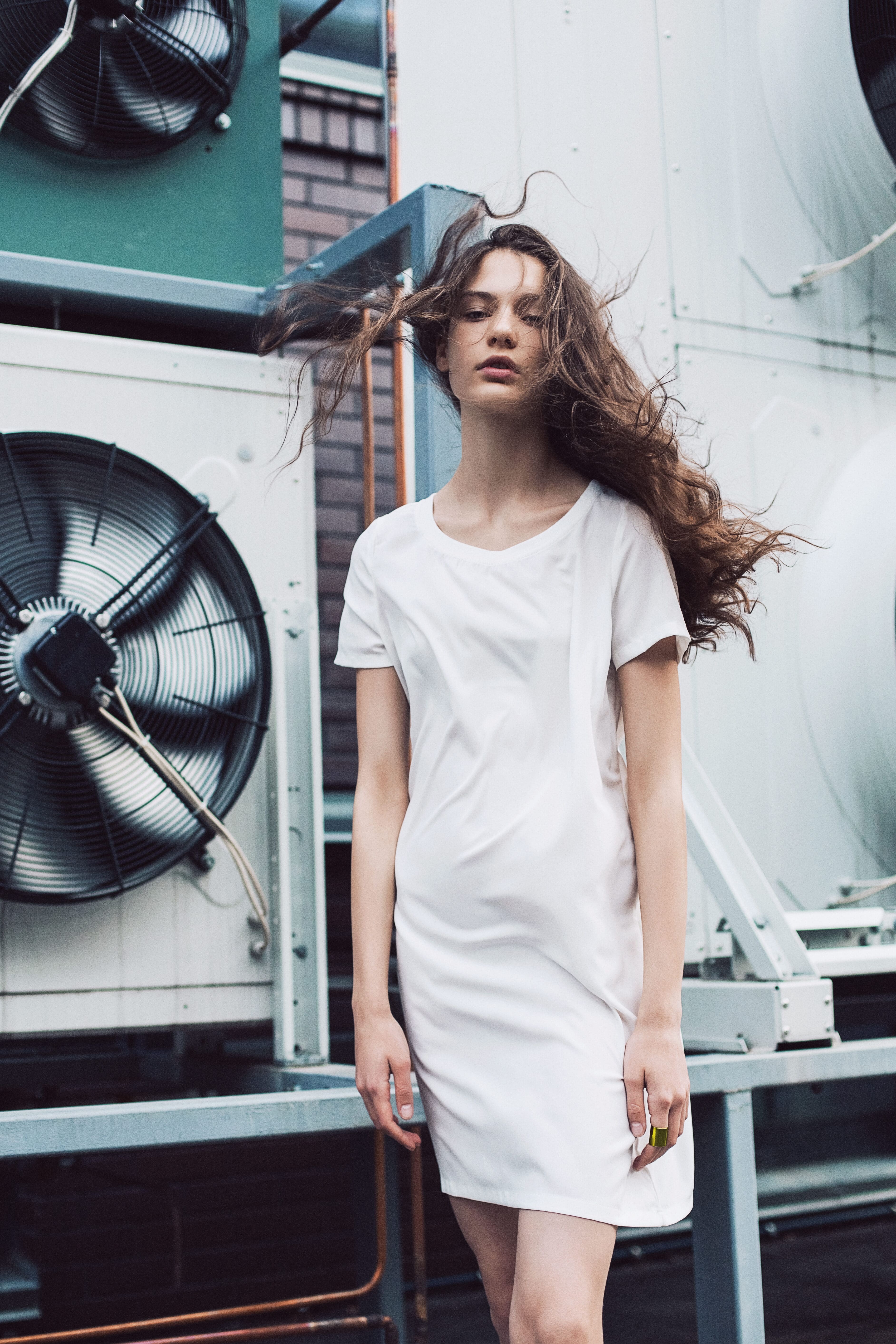
Fashion/Editorial Model
Often seen in magazine photoshoots for fashion magazines like Vogue and advertising campaigns for luxury brands editorial models know how to really interact with the camera and create interesting shapes with their bodies to show off a garment
Swimsuit/Lingerie Models
For example, Victoria’s Secret models would fall into this type of modeling.
Keep in mind, there’s often crossover between these different types of models.
Commercial Model
Commercial models’ main objective is to help sell a product or merchandise through advertising campaigns.
Fitness Model
They can be employed for advertising campaigns, but they can also participate in a more active form of modeling where they demonstrate various exercises.
Parts Models
In this type of modeling, you generally have one part of your body that is used in campaigns, like hands, feet, legs, arms, etc.
Fit Model
Not to be confused with fitness model, these are two different things.
Fit models are employed by fashion houses to improve the fit of their garments.
In other words, a fit model works behind the scenes and can really be any size depending on what sizing the brand specializes in.
Promotional Model
Promotional modeling more so relies on being personable, outgoing, and easy to talk to. Promotional models are most often hired for events and trade shows in order to help promote/sell a product.
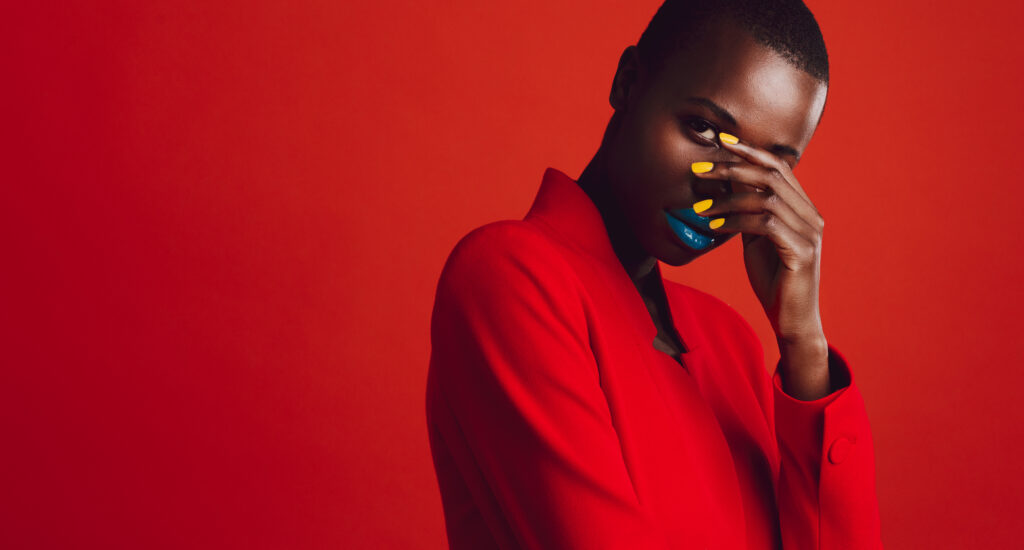

Glamour Model
The main difference between an editorial model and a glamor model is the body type and photoshoot style. Fashion models tend to have a more slim figure and striking appearance. They take photos that can be considered artistic and avant-garde, whereas the glamor model can sometimes have a curvier figure, and might work on campaigns that are more accessible.
Print Models
This kind of model specializes in taking photos. Most models are—to some extent—considered print models, but for those who exclusively specialize in print modeling, and not walking a runway.
Runway Model
Adhering to strict regulations regarding height, weight, and measurements, these models travel the world and are often seen walking for designers and fashion houses.
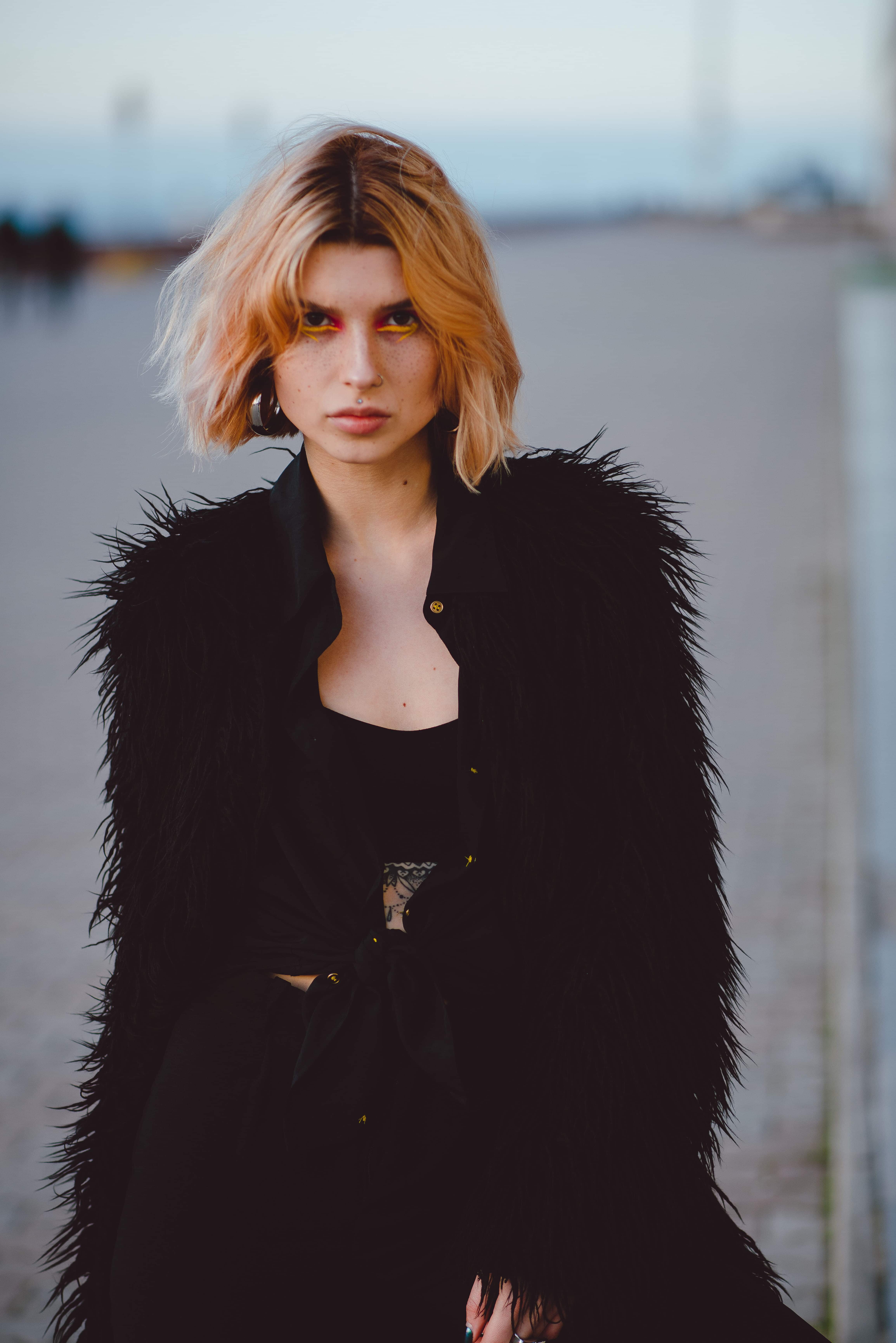
Alt Model
Do you have an ever-expanding collection of tattoos and piercings? Is your everyday look other people’s idea of a fancy dress costume? Alt, or alternative, models don’t typically fit in with industry norms when it comes to beauty and style
Models Based on Appearance
Keep in mind that there are also different types of models that can be classified based exclusively on appearance. Some categorical examples include:
- Plus-size models
- Mature models
- Male models
- Child models
- Petite models
Unlike some other artistic pursuits where having a niche you focus on might be important, modeling more so relies on you putting yourself out there and seeing where your talents are needed/wanted by clients.
Don’t let yourself be pigeon-holed into one style of modeling. Get out there and see what type of modeling is best for you by gaining experience.
What Are Some Examples Of Models & Portfolios?
Most of you probably already have a handful of examples of famous models at the top of your mind, but to give us a more realistic look at modeling for the everyday aspiring model, check out these examples. With some work, this could be you!
Rorie Yum
Using Format’s Horizon Left theme, Yum has curated a compelling sequence of images, using images that compliment and others that contrast perfectly to maintain interest and demonstrates their incredible range. Having worked as a creative, it’s clear from this excellent site design that Yum collaborates and conceptualizes in all aspects of work, having a strong vision for their work.
Jaenna Wessling
Looking through Jaenna Wessling’s portfolio website, you’ll quickly notice how easy it is to navigate. Wesslin showcases her work with an accessible left-hand menu linking to her various types of modeling specialties as well as her social links, about page and contact page. You’ll notice that it is quite a minimalist design, showcasing mostly images.
As a model, your photos are your most important asset, so giving them a prominent spot on your website that is free from distractions is an example worth following. On Wessling’s portfolio website galleries feature large images and a horizontal scroll galleries.
Priscilia Van B
While using the same Amazon template, Berlin-based model Priscilia Van B has served attitude in every customization. Used for its simplicity of layout, but still offering maximum visibility of range by staggering larger thumbnails–she customized the site padding to favour her 2:3 aspect ratios, ensuring her images can be read fully. Setting them to load immediately, with darkened overlay on hover. An edgy, editorial portfolio for a fearless model.
If you want to dive deeper into model examples, we highly recommend looking through this list of model examples.
Everyday You’re Hustling
While you work towards being the world’s next supermodel, this is a great time to advocate for yourself and make yourself your number one client. Use Instagram to your advantage. Take inspiration from other models to see how they create a professional account:
- No food pictures. Casting agents don’t care about your dinner.
- Unless you’re holding or posing with them, keep your pets on your personal account.
- Harass your friends to take your picture so your feed isn’t all selfies.
- Pay attention to trending hashtags and use them properly.
- Blog. A lot of influencers and models we all know and love started as vloggers, bloggers, and Instagram personalities. Blogging creates valuable content for your digital portfolio and allows you to work on smaller passion projects that may not be right for your portfolio.
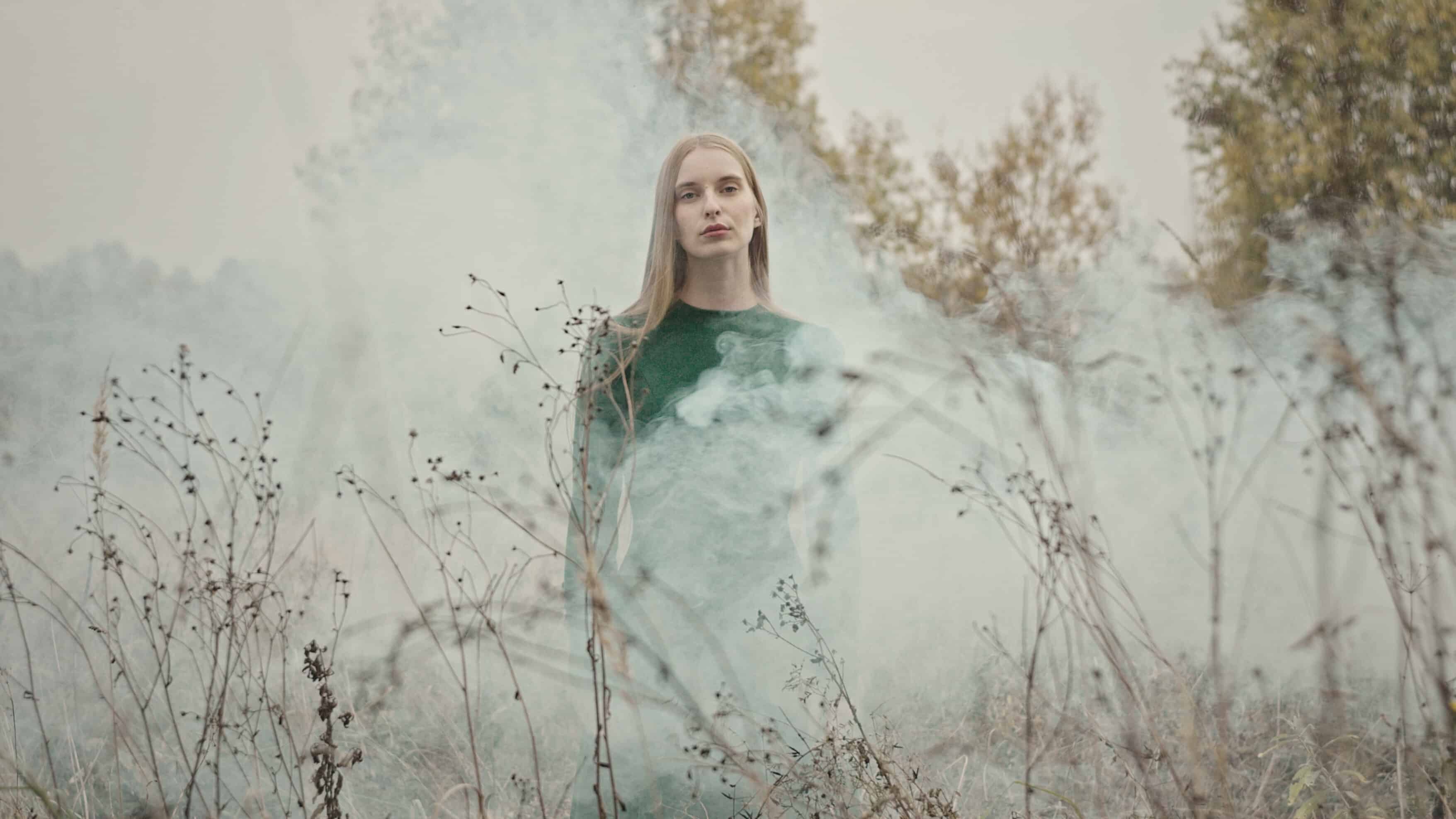
What Else Do I Need to Know About Becoming a Model?
Now that you’ve built a modeling portfolio and understand the type of modeling, you want to make sure you’re well equipped with the tools to become a model. Whether you want to become a fashion model for high fashion, a glamour model, or a plus size model, here are some extra tips for aspiring models on how to become a model.
How Tall Do You Have to Be to Become a Fashion Model?
Depending on the type of modeling you’d like to pursue, being lean and tall may not be a critical factor. That’s why, aside from height, the agency will often look at the other features too.
If you are interested in modeling for editorial, commercial prints, body parts, or catalogs, brands will look for models that can resonate with their brand. From body physique to facial structure, criteria for the model can differ for each job. However, if you’re looking to become a high fashion model, most modeling agencies may have a requirement of at least 5″8 to 5″11. Even so, there are a few high fashion models that are 5″7 or over 6″0 tall. Companies may make exceptions, as long as they fit other requirements.
How Do You Get Started As A Model?
Getting your modeling career started is often not a linear path. It will likely require some trial and error, and you will likely have to book some jobs that don’t necessarily fall under what you might have expected from your dream jobs. Having said that, if you follow these steps, continue to work hard, and remain persistent despite what this challenging industry throws at you, you’ll slowly start to build the modeling career you want.
Follow these steps if you want to get started as a model.
Step 1: Learn, study, assess your strengths
Modeling doesn’t require any formal education, but you still should have a good sense of the industry that you’re about to get involved with. For most, this means studying the different types of modeling,
Step 2: Practice
This means spending time studying other models, practicing poses, and understanding your best angles.
For runway models, even something as simple as walking takes on a whole new meaning. Modeling can be both physically and mentally demanding. Preparing for this by keeping your mind and your body in good shape during these early days of your career can help set you up for success.
Step 3: Build your portfolio
Always one of the most important steps for anyone looking to get involved in a creative industry, like modeling, it is absolutely essential that you spend time crafting a professional portfolio that will help draw potential clients to your work.
Step 4: Hire an agent
As an aspiring model, you will likely find that you’re able to book more jobs if you work with an agent.
An agent essentially works as a liaison that helps to find and book jobs on your behalf. While you certainly can do this on your own, you will quickly discover that most clients want to work with agents and not directly with models.
Step 5: Get out there
Unless you just happen to be discovered by someone searching for a model with your exact look, most models need to put themselves out there in order to start building connections.
While your agent will likely be the one booking your jobs, the most successful models also spend time networking and building their brand.

How Do You Price Yourself As A Model?
Earnings as a model can vary greatly depending on the clients you work with, the type of modeling that you do, and your experience.
In general, there are two ways models get paid:
- By the hour
- By the day
Different scenarios will be more tailored to different pricing situations, so we’ll go over each to give you a better idea of how to charge for your services.
Modeling prices by the hour
If you’re only hired for a couple of hours during the day this pricing is appropriate.
Hourly shoots are generally quick jobs that don’t require as much effort. While this isn’t always the case, most modeling shoots for bigger campaigns, editorial shoots, or advertising campaigns will be all-day or multi-day events.
Hourly prices also generally tend to be most appropriate when you’re not exactly sure what type of work to expect during that hour of work. For example, if you’re working as a promotional model and you’re not sure exactly what is expected of you, charging an hourly rate ensures that you are paid fairly for your time.
Hourly rates are also ideal if your client seems unsure about how long the project will take. This ensures that no matter how long or short the project is, you are compensated fairly.
If you have some experience, you’ll likely find that $50-75/hour is appropriate. If you have more experience, you might be able to charge $100+/hour. As you would expect, experience is key when pricing yourself as a model.
Modeling prices by the day
Some modelling jobs will be full-day events, so most models prefer to be paid by the day. Just be sure that you know exactly what “a day” entails. For some, a full day might be a traditional 9-5 day, while other clients might expect you to show up for hair and makeup in the early hours of the morning and work until the evening. It’s important to be specific about what your day rate includes, and if the job goes beyond that scope, what the hourly overtime rate is.
Full-day shoots generally range in price from $300/day for those with some experience to $500+/day for those with a good deal of experience.
Keep in mind that half-day shoot pricing is also popular. Again, be sure that you know what a half-day entails. If you’re not sure or your client seems uncertain, stay safe and use your hourly rate.
Things to keep in mind when determining your modeling rate
- Are there perks involved with the job? (i.e. is the client providing lodging, transportation, free product?)
- Do you need to provide your own hair, makeup, and or/outfits?
- How many hours/days are expected from the job?
- What kind of job is it? (you can generally expect to charge higher rates for lingerie, swimsuit, and nude projects considering the nature of the job)
Rates when working with an agency
Keep in mind that the above rates are generally most appropriate if you’re a freelance model.
As you’ll remember, we generally recommend working with an agency since most professional clients will prefer working with an agency that they can depend on. However, if you want to avoid agency fees, you can certainly use the freelance modeling rates listed above.
In general, most agency fees are about 20% of whatever you are paid.
Ready?
If you need help building a professional portfolio that helps you book jobs, you’ll find all our best portfolio tips for models here.
We can’t wait to see how your modeling career takes off!